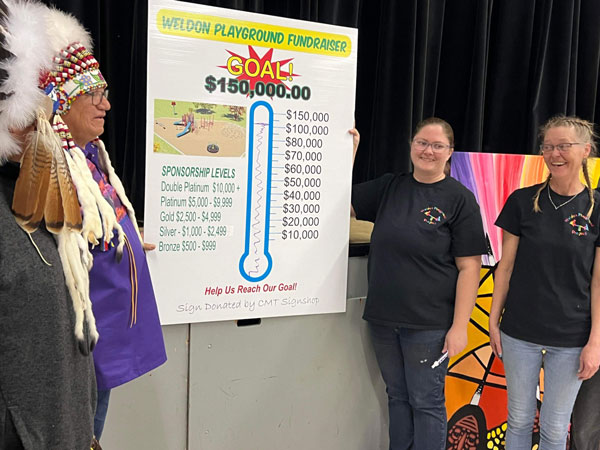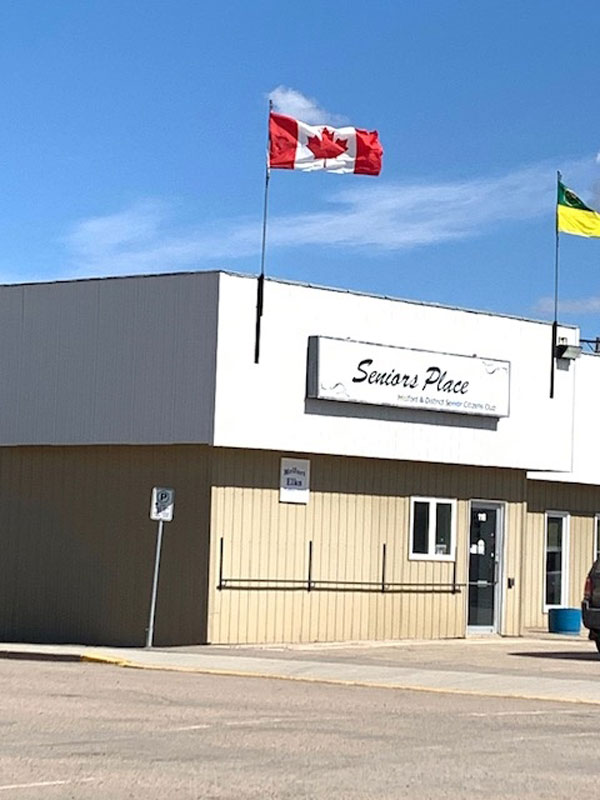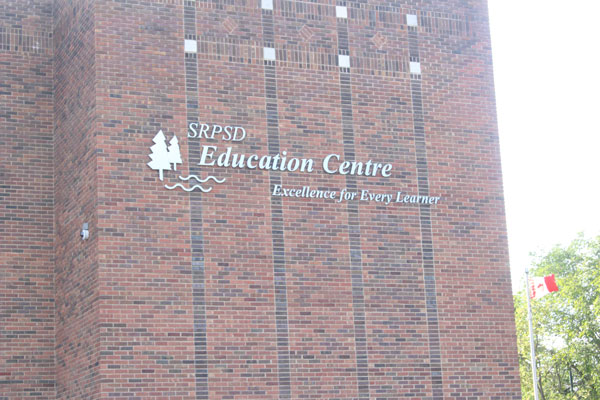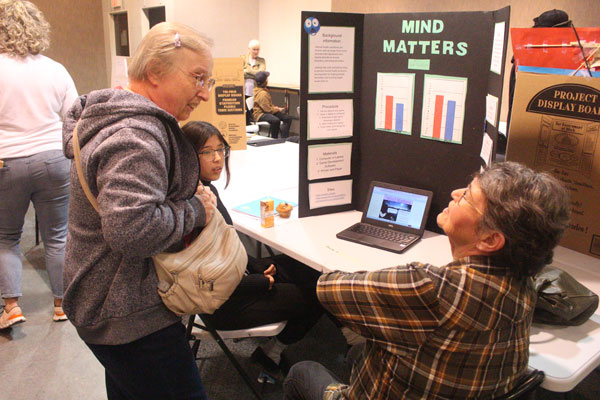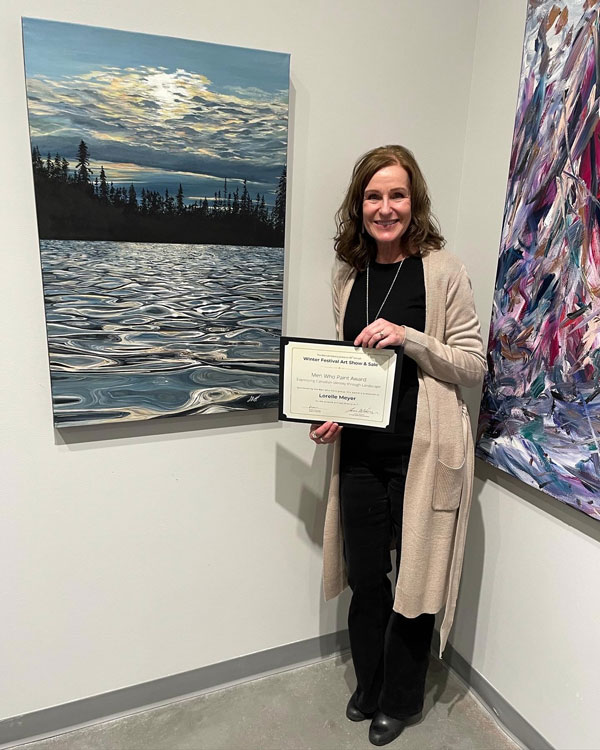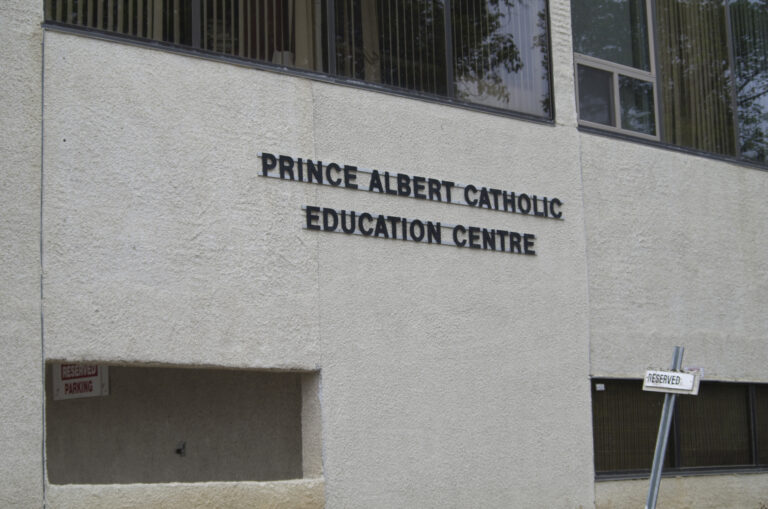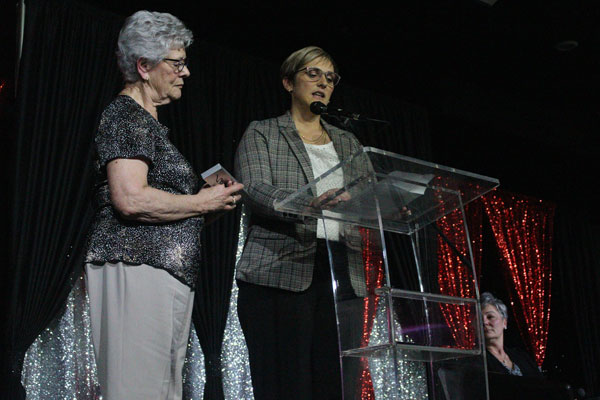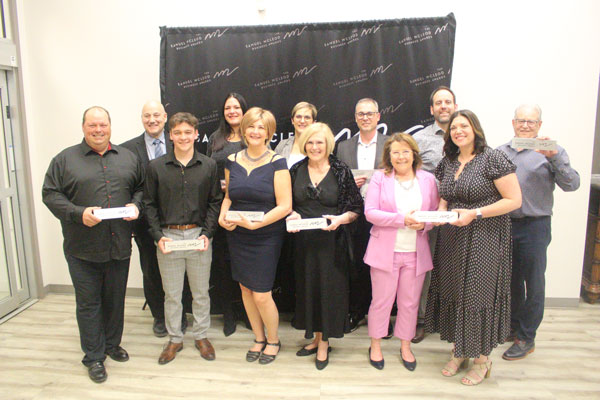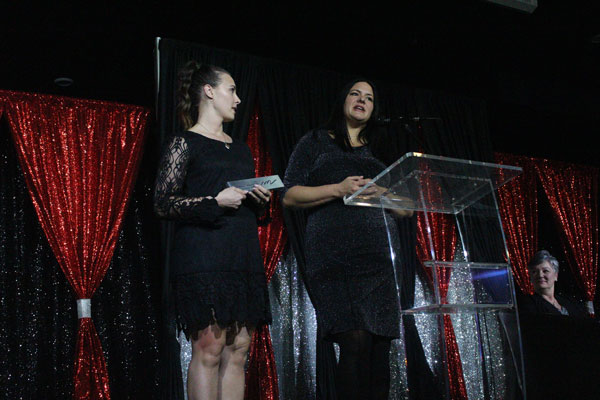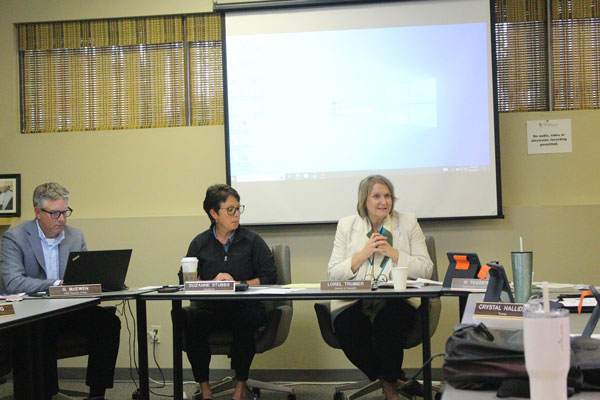There were plenty of tears shed at the Weldon Playground Project pancake breakfast fundraiser on April 13 thanks to a donation from the three James Smith Cree Nation bands.
New James Smith Chief Kirby Constant along with Chief Calvin Sanderson of the Chakastaypasin Band and Councillor Adam Whitehead of the Peter Chapman Band were all on hand as the three bands combined to donate $116,000 to help the community create a new playground in honour of 78-year-old Wesley Petterson.
Weldon community members began fundraising for the park as a way to honour Petterson, who was killed in the mass stabbing carried out by Myles Sanderson in James Smith Cree Nation and Weldon.
Sanderson said community members wanted to help with fundraising for the project. He said the community’s reaction touched his heart.
“They were pretty emotional in that donation that we gave for the community this morning,” Sanderson said.
“We were very grateful to do that for that community,” he added.
Weldon Playground Project co-director Jamie Petrie was still overwhelmed by the donation hours later when interviewed by phone,
“I have no words,” Petrie said. “Our hearts are filled with so much joy and gratitude, and I don’t think there’s enough words for me to describe what we’re feeling right now. It was a complete shock, obviously, but it’s a good shock and it just made it that much closer to our goal, which we really appreciate.”
Petterson was 78 years old when was killed on Sept. 4, 2022. He was among the 11 people who died in the mass stabbing.
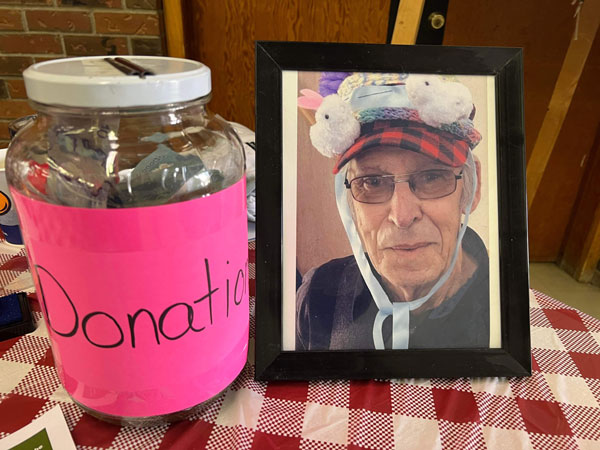
Sanderson said that the donation was a larger part of the healing process for both communities.
“We always look after our neighbouring brothers and sisters involved in what happened there too,” he said.
He added that the band members are going to continue to fundraise on behalf of the playground through bingos and bake sales until the committee reaches their goal.
Sanderson said the communities have bonded since the tragedy.
“They have always been coming to our communities here since the incident happened. (They) come and participate in our pow wows and our events and their events. It’s always meaningful for the neighbouring brothers and sisters to come over and participate in our events and we also invited them out for the summer’s events,” he explained.
Petrie said the tragedy could have divided the two communities, but instead it’s brought them closer together.
“I’ve seen nothing but support from James Smith since that happened and I hope that they know that we are there for them as well,” Petrie said. “They have been nothing but amazing for our community.”
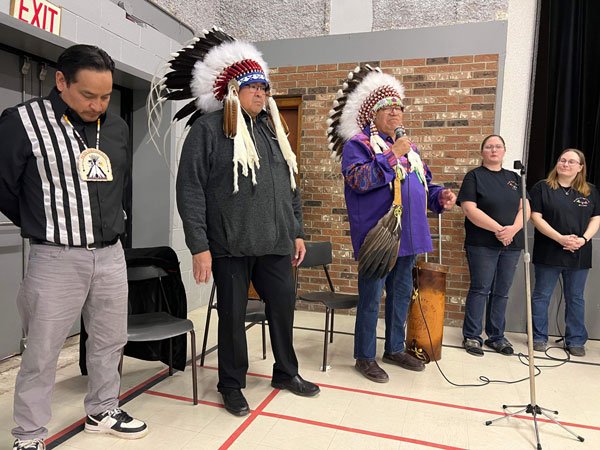
On top of the large donation, they also gifted the village a hand-painted portrait that was done by prominent James Smith artist Jerry Whitehead as a token of their appreciation that will hang in the Weldon Auditorium.
Prince Albert Member of Parliament Randy Hoback also attended the event and brought a gift to the family of Wes Petterson on behalf of the Federal Government. Hoback presented Wes Petterson’s sister-in-law with a Canadian flag that was flown on the Peace Tower at Parliament Hill in Ottawa.
Melfort RCMP Detachment commander Ryan Case was also on hand for the ceremony.
The Weldon Playground Committee currently has five members who have set out to raise $150,000 for the project. A conceptual drawing of the park includes playground equipment, rubberized ground cover, benches, and signs for the park’s namesake.
Petrie said that the group is driven and they will accomplish their goal. After the pancake breakfast and donation, they have raised $121,000.
“There’s not much left for us to raise, but we’re still going to go out there,” she said. “We’ve got a bottle drive next weekend and then the following weekend—the day of the Gord Bamford concert here in Weldon—we volunteered to help with the concession and, set up the tables and whatnot to help them with that.”
They also have a family barbecue planned for the town-wide garage sale in June,
“We want to just have a fun day for the kids out there and see what we can do with that as well,” Petrie said.
“Our goal, besides the playground, is to bring everybody together,” she added. “It’s been exactly what we wanted. Every time we turn around, there’s a new community member that wants to help us or is there for us or is doing things.
“It’s just been amazing to see everybody come together and help us with this. Our minds are completely blown right now. I have no words.”
The group plans to name the park and playground Wes Petterson Memorial Park after the late Wesley Petterson. They say Petterson was known for his friendly, good-natured demeanour. He was an early riser and typically the first person to arrive at the seniors’ centre to make coffee for the group of friends and neighbours that would gather there to visit.
Sanderson remembered Petterson as the man in charge of the rink in Weldon.
“We all knew Wes when he was the rink guy there and I mentioned I used to go curling in Weldon there, but they had a real heavy ice and you had to throw the rock pretty hard just to try and get it over the hog line and it was pretty tough playing in that rink that time,” Sanderson said.
Currently, in Weldon, there’s no designated park and only a few metal swings in an abandoned schoolyard.
The group hasn’t finalized a site but aims to build the park near the Weldon care home and hopes to have the play structure ready for use by the end of the summer.
The committee was honoured by the donation.
“We’re just forever grateful to James Smith,” Petrie said. “They’re going to help us achieve our goal and make the most amazing Memorial Park for Wes Petterson we possibly can. That can bring the whole community together so we are forever grateful to them.”
michael.oleksyn@paherald.sk.ca

